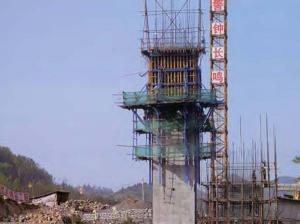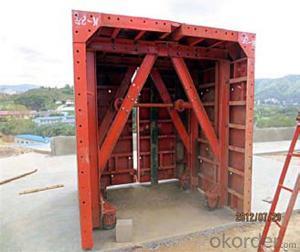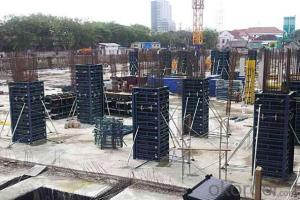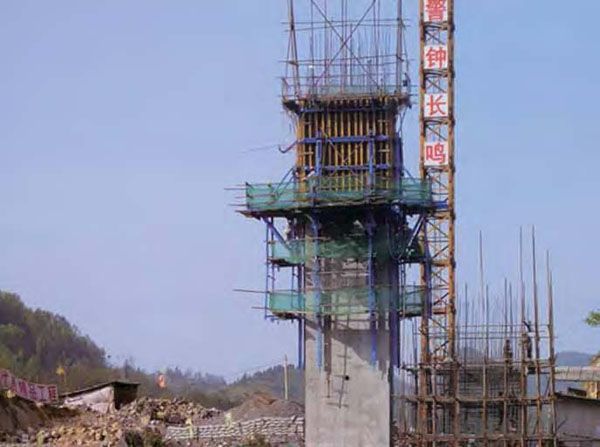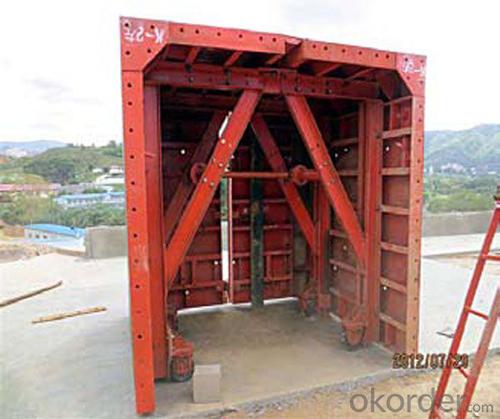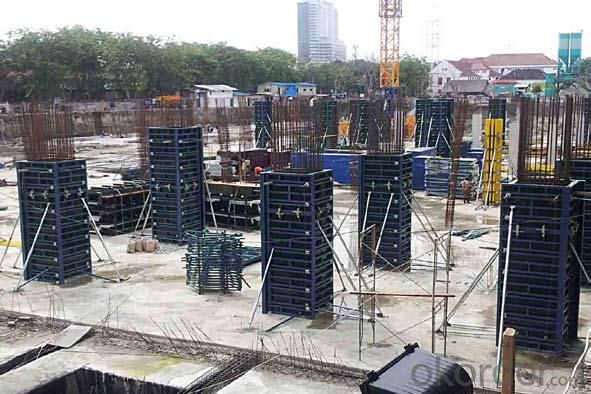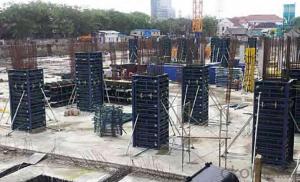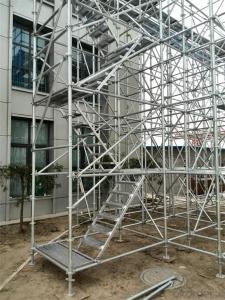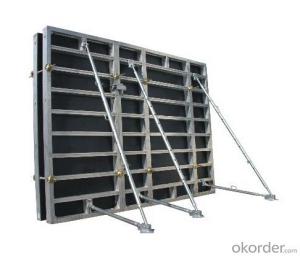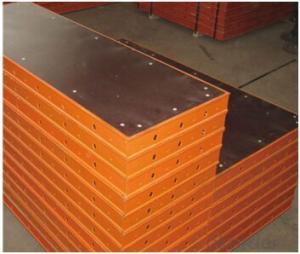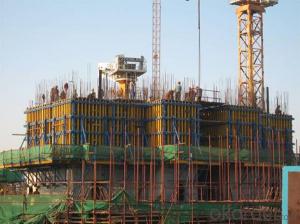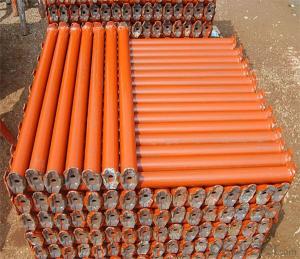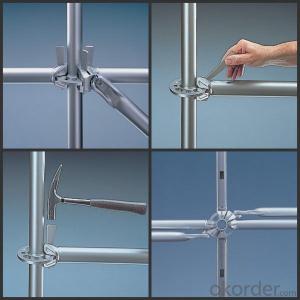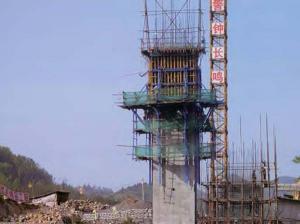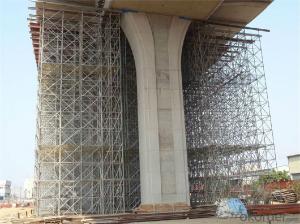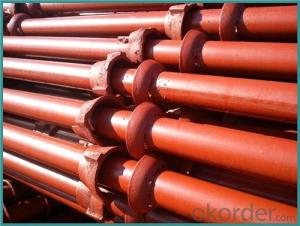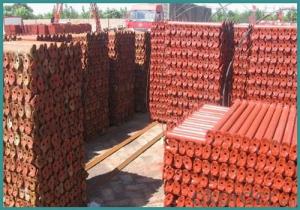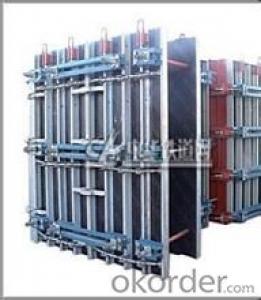Formwork Steel Props System with High Quality
- Loading Port:
- Tianjin
- Payment Terms:
- TT OR LC
- Min Order Qty:
- 28 m.t
- Supply Capability:
- 1000 m.t/month
OKorder Service Pledge
OKorder Financial Service
You Might Also Like
Formwork Steel Props System with High Quality
Product pictures:
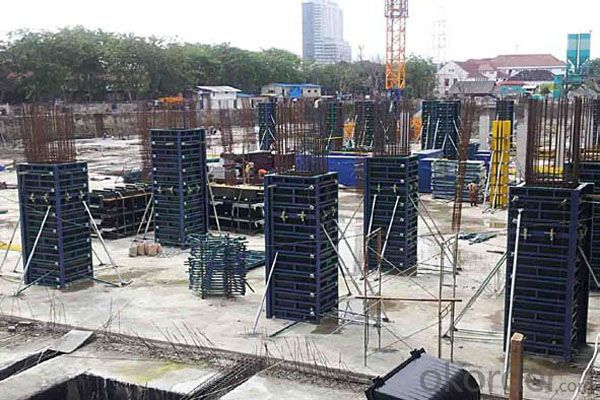
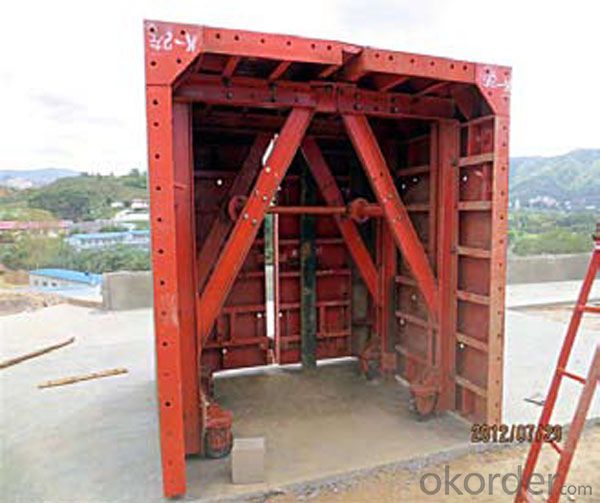
Product description:
Name: | RingLock Scaffold System |
Category: | Scaffolding System |
Material: | Steel (Q235/Q345) |
Size: | D48*3.25mm, etc |
Surface: | Electro Galvanized, Hot Dipped Galvanized, Painted, Powder Coated |
Component: | Standard, Ledger, Diagonal Brace, Bracket, Base Jack, U Head Jack, Etc. |
Application: | Slab Support, Staircase, Stage Plateforms, Bridge Support, Mobile Tower, etc. |
Manufacturer: | OEM is Available |
Items or goods can be manufactured according to your standards. | |
Advantage
* Good loading capacity
* Easy to assemble and dismantle
* Excellent quality for formwork & scaffolding with wide choices
Other scaffolding & formwork products:
(1) Scaffolding System:
(2) Scaffolding Frame & Accessories:
(3) Scaffolding Couplers/Clamps:
(4) Formwork System Scaffolding & Accessories:
Company introduce and advantages:
1. A state-owned company, prestige fi rst.
2. One of Fortune 500 companies in the world. No. 5 in the building material fi eld.
3. Six Sigma strategy , which means no more than 3.4 defects existing among one million of error
possibilities.
4. In line with the business, we launched E-business platform Okorder.com.
5. We are highly recognized by our business partners and clients all over the world and has obtained rapid
development under the spirit of win-win.
FAQ
Why Us?
We are one of the largest construction materials suppliers in China.
We own professional manufacturers with powerful producing capacity.
Extensive and comprehensive quality control system
Excellent products with competitive prices.
Efficient services in pre and after sale.
Full energy with affluent experience team.
- Q: Can steel frame formwork be used for residential buildings?
- Yes, steel frame formwork can be used for residential buildings. Steel frame formwork is a versatile and durable solution for constructing concrete structures, including residential buildings. It provides a strong and rigid framework that can withstand the pressure of concrete pouring and ensure accurate alignment and stability during the construction process. Additionally, steel frame formwork is reusable, which makes it a cost-effective choice for residential projects. It allows for faster construction and provides a smooth finish to the concrete structure. Overall, steel frame formwork is a suitable option for residential buildings due to its strength, durability, and efficiency.
- Q: What are the key considerations for selecting the appropriate steel frame formwork system for tall structures?
- When choosing the suitable steel frame formwork system for tall structures, there are several important factors that need to be taken into consideration: 1. Load-bearing capacity: The formwork system must be capable of withstanding the weight of the concrete and other materials used in the construction of tall structures. It should possess a high load-bearing capacity to guarantee the safety and stability of the structure. 2. Flexibility and adjustability: Tall structures often have intricate shapes and varying floor plans. The formwork system should be adaptable and adjustable to accommodate these design variations. It should be able to conform to different heights, angles, and curves to ensure precise and accurate construction. 3. Speed and efficiency: The construction of tall structures requires a fast and efficient formwork system to meet project deadlines. The chosen system should be easy to install, dismantle, and relocate to different levels. It should also facilitate quick pouring and curing of concrete to expedite the construction process. 4. Safety: Safety is of paramount importance in any construction project, particularly in tall structures. The formwork system should include safety features such as guardrails, handrails, and non-slip surfaces to safeguard workers from falls and accidents. It should also provide adequate access and exit points to ensure the safe movement of workers within the structure. 5. Durability and reusability: Tall structures often necessitate multiple concrete pours, so the formwork system should be durable enough to withstand repeated use without compromising its structural integrity. Additionally, it should be designed for easy dismantling, cleaning, and reassembly to minimize costs and waste. 6. Cost-effectiveness: Choosing a cost-effective formwork system is crucial for tall structures, as the project budget can be significantly impacted by the selection of formwork. The system should offer a good balance between quality, performance, and cost. It is important to consider not only the initial investment but also the long-term maintenance and reusability costs. By taking these key factors into account, project managers and engineers can select the most suitable steel frame formwork system for tall structures, ensuring the efficient, safe, and successful completion of the construction project.
- Q: What are the advantages of using steel frame formwork?
- There are several advantages of using steel frame formwork in construction projects. Firstly, steel frame formwork provides high strength and durability, allowing it to withstand the pressure and weight of concrete. This ensures a stable and secure structure. Secondly, steel frame formwork is highly versatile and can be easily customized to fit various shapes and sizes, making it suitable for a wide range of construction projects. Additionally, steel frame formwork offers excellent reusability, reducing the overall cost and waste associated with formwork systems. Lastly, steel frame formwork provides efficient and quick assembly and dismantling, saving time and labor during the construction process.
- Q: Can steel frame formwork be used for inclined concrete surfaces?
- Inclined concrete surfaces can indeed utilize steel frame formwork. This formwork option offers versatility and easy adaptability to different angles and slopes, making it highly suitable for constructing such surfaces. The robust and long-lasting steel frames provide the necessary stability and support during the concrete pouring and curing stages. Moreover, steel formwork systems can be tailor-made to meet specific project needs, enabling the creation of diverse inclined shapes and structures. In summary, steel frame formwork represents an efficient and effective solution for the construction of inclined concrete surfaces.
- Q: How does steel frame formwork ensure proper curing of concrete?
- Proper curing of concrete is ensured through the utilization of steel frame formwork in several ways. To begin with, the steel frame formwork establishes a robust and inflexible structure that securely holds the concrete in position throughout the curing process. This effectively prevents any movement or distortion of the concrete, permitting it to set and harden correctly. Moreover, the design of the steel frame formwork incorporates various characteristics that actively encourage appropriate curing. Included among these features are integrated water channels and drainage systems that enable the controlled and efficient removal of excess water from the concrete. Consequently, this helps to eliminate the formation of voids or weak areas in the finalized concrete. Additionally, the steel frame formwork is easily insulatable, facilitating the maintenance of a consistent temperature during the curing process. This is of utmost importance, as fluctuations in temperature can have a detrimental impact on the strength and durability of the concrete. By providing insulation, the steel frame formwork actively contributes to the establishment of ideal curing conditions, ensuring uniform curing of the concrete. Furthermore, the steel frame formwork allows for convenient access to the surface of the concrete, an essential aspect of proper curing. This enables workers to closely monitor the curing process, conduct necessary inspections, and make any required adjustments promptly. As a result, the concrete can cure accurately, and any potential issues can be promptly addressed. In summary, the utilization of steel frame formwork in concrete construction plays a pivotal role in guaranteeing proper curing. It establishes a stable and secure structure, facilitates efficient water removal, enables temperature control, and allows for easy access during monitoring and inspection. These combined factors contribute to the production of high-quality and long-lasting concrete structures.
- Q: Can steel frame formwork be easily adjusted or modified during the construction process?
- Yes, steel frame formwork can be easily adjusted or modified during the construction process. Its modular design allows for flexibility and adaptability to different project requirements. The adjustable components and connections enable quick and efficient modifications to accommodate changes in design or construction needs.
- Q: What are the different types of support systems used with steel frame formwork?
- There are several different types of support systems that can be used with steel frame formwork in construction projects. These support systems are designed to provide stability and strength to the formwork, ensuring that it can withstand the weight and pressure of the concrete being poured. One common type of support system used with steel frame formwork is adjustable steel props. These props are adjustable in height and can be easily positioned to support the formwork at the desired level. They are typically used in conjunction with horizontal beams to provide additional support. Another type of support system is horizontal beams, also known as walers. These beams are typically made of steel or aluminum and are used to distribute the weight of the formwork across a larger area. They are placed horizontally and are secured to the vertical supports or props, providing additional stability to the formwork. In addition to adjustable props and horizontal beams, diagonal or cross-bracing can also be used as a support system. These diagonal members are typically made of steel and are used to provide additional rigidity and stability to the formwork. They are installed diagonally between the vertical supports or props, creating a triangular structure that helps to prevent the formwork from collapsing or deforming under the weight of the concrete. Finally, tie rods or tie wires can also be used as a support system for steel frame formwork. These rods or wires are used to secure the formwork panels together, creating a tight and rigid structure. They are typically placed at regular intervals along the formwork panels and are tightened to provide additional support and stability. Overall, the different types of support systems used with steel frame formwork are adjustable steel props, horizontal beams, diagonal or cross-bracing, and tie rods or tie wires. Each of these support systems plays a crucial role in ensuring the strength and stability of the formwork during the concrete pouring process.
- Q: Can steel frame formwork be used for concrete beams?
- Concrete beams can indeed be constructed using steel frame formwork. This system, known for its versatility and durability, is frequently employed in construction to provide support and shape to concrete structures. The beauty of steel frame formwork lies in its reusability, making it a cost-effective and efficient option for repetitive beam construction. By providing the necessary support and containment, this formwork ensures that the concrete is accurately formed according to specifications during the pouring and curing process. Furthermore, steel frame formwork allows for effortless installation, adjustment, and removal, making it an ideal choice for concrete beams of various sizes and shapes.
- Q: Can steel frame formwork be used for the construction of transportation infrastructure?
- Transportation infrastructure can indeed utilize steel frame formwork. This system is known for its versatility and durability, commonly employed in various construction endeavors, including bridges, tunnels, and highways. Steel frame formwork boasts numerous benefits for transportation infrastructure construction. Primarily, its robustness and rigidity enable it to bear heavy loads and provide exceptional support to the concrete during the building process. This is particularly significant in transportation projects where structures must endure substantial weight and diverse environmental conditions. Furthermore, steel frame formwork offers extensive customization options, easily adapting to the required shapes and sizes for transportation infrastructure. This flexibility ensures that the formwork can be tailored to meet specific project needs, optimizing outcomes and facilitating efficient construction. Moreover, the reusability of steel frame formwork makes it a cost-effective solution for transportation infrastructure projects. The ability to reuse the formwork not only reduces construction expenses but also minimizes waste and environmental impact. Additionally, steel frame formwork delivers a smooth and high-quality finish to concrete structures, crucial in transportation infrastructure where precision and durability are paramount. The formwork system enables accurate placement and alignment of the concrete, ensuring the integrity and longevity of the infrastructure. In conclusion, steel frame formwork is a suitable choice for constructing transportation infrastructure due to its strength, versatility, reusability, and ability to provide high-quality results. Its application contributes to the successful and efficient completion of transportation projects, guaranteeing the durability and safety of the infrastructure.
- Q: Can steel frame formwork be used for precast wall panels?
- Yes, steel frame formwork can be used for precast wall panels. Steel frame formwork is commonly used in construction projects, including the production of precast wall panels. Steel formwork provides a strong and durable structure for casting the concrete panels and can withstand the high pressures exerted by the wet concrete during the curing process. Additionally, steel formwork allows for precise and accurate shaping of the wall panels, ensuring they meet the desired specifications and dimensions. The steel frame formwork system can be easily assembled and disassembled, making it convenient for repetitive use in mass production of precast wall panels. Overall, steel frame formwork offers numerous advantages for the production of precast wall panels, such as strength, durability, accuracy, and ease of use.
Send your message to us
Formwork Steel Props System with High Quality
- Loading Port:
- Tianjin
- Payment Terms:
- TT OR LC
- Min Order Qty:
- 28 m.t
- Supply Capability:
- 1000 m.t/month
OKorder Service Pledge
OKorder Financial Service
Similar products
Hot products
Hot Searches
Related keywords
